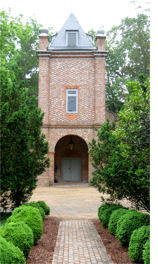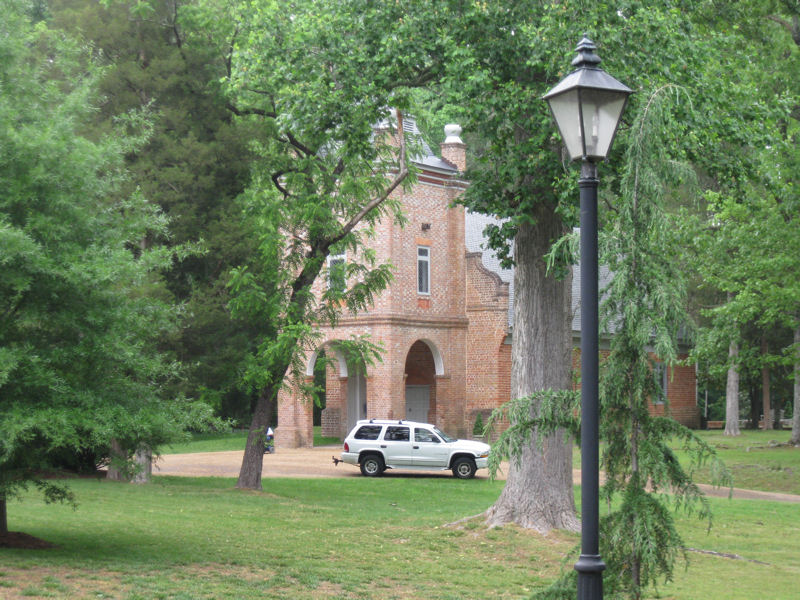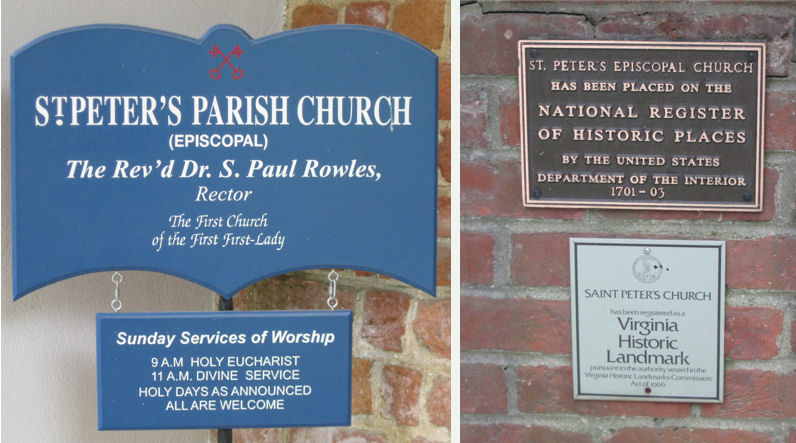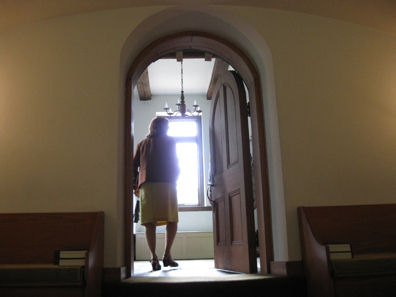St. Peter’s Church New Kent County, Virginia
Photos by Lisa Chandler Vaughan
Erected: 1701
Denomination: Anglican
Location: from Route 33 (between West Point and Richmond), 1 mile north of Talleysville on Route 609 and approximately 1/2 mile on Route 642
Source: “Colonial Churches of Virginia” by Don and Sue Massey
St. Peter’s Church, New Kent County, Virginia
by Bonnie Blanks Bew
On May 14 the Richmond Chapter of the Colonial Dames XVII Century placed a Virginia Historical Marker on St. Peters Parish Church in New Kent County, Virginia. It is the “First Church of the First First-Lady,” Martha Dandridge Custis Washington.Robert Chandler (1654-1720), grandson of John born 1600, was a parish member. He had children christened here as early as 1685 and into the early 1700s. The parish register is the only surviving record of his family in this area, as New Kent is a “burned record” county. The church is a tangible reminder to Robert’s descendants of their Chandler heritage.
The original wood-frame church was built by 1685. It was called “Broken-Back’d Church” which referenced its structural weakness. The vestry in 1700 ordered Col. Gideon Macon and Thomas Smith to purchase one acre to build the new “Brick Church.” The present building stood completed by 1703. In 1722 a belfry with a meeting room was added.
Source: “Colonial Churches of Virginia” by Don and Sue Massey, pp. 31-33.
More about St. Peter’s Church from “Colonial Churches of Virginia”
Entrance and sign |
|
 |
 |
Exterior of St. Peter’s Church |
|
 |
|
 |
 |
 |
|
Interior of St. Peter’s Church |
|
 |
 |
 |
 |
Churchyard and garden |
|
 |
 |
| Photos by Lisa Chandler Vaughan | |
More about St. Peter’s Church from “Colonial Churches of Virginia”:
- Martha Dandridge, St. Peter’s most famous parishioner, was born at nearby Chestnut Grove on 2 June 1731. She married Col. Daniel Parker Custis in June 1749.
- After eight years of marriage, Mrs. Custis was left a widow with two surviving children.
- On 6 January 1758, she remarried to Col. George Washington. Due to cold weather that day, the future President and First Lady were not married at St. Peter’s Church but at Martha’s home, “White House,” on the Pamunkey River several miles from the church.
- St. Peter’s Parish was originally divided into an Upper and a Lower Parish. In 1704, Upper Parish became St. John’s Parish. What remained of St. Peter’s Parish had two churches, one of which was an old frame building, possibly erected as early as 1685, known as the “Broken-Back’d” church because of structural weakness.
- According to the first entry in the vestry book, dated 13 August 1700, Gideon Macon and Thomas Smith were instructed to purchase one acre of land from Thomas Jackson on which to erect a church, designed by Will Hughes. The “Brick Church,” as it was described, was built in 1703, at a cost of 146,000 weight of tobacco.
- In 1722, a belfry was built at the west end of the church to house a bell given to the parish. The tower is one of the most remarkable features of the church.
- By the end of the Revolutionary War, the congregation of St. Peter’s had scattered. The church was inactive until 1820, when it was repaired and used exclusively by Presbyterians until 1843 when Episcopal services were revived. The two denominations alternated weekly services until 1856.
- During the Civil War, the church was defaced by Federal soldiers, who stripped it of its furnishings and stabled their horses inside the building.
- In 1922, a group of people from many denominations took steps to save the historic building by forming the St. Peter’s Church Restoration Association.
- The churchyard at St. Peter’s has a number of colonial graves, located near the east and south walls of the church.
Source: Colonial Churches of Virginia by Don and Sue Massey, published Howell Press.



